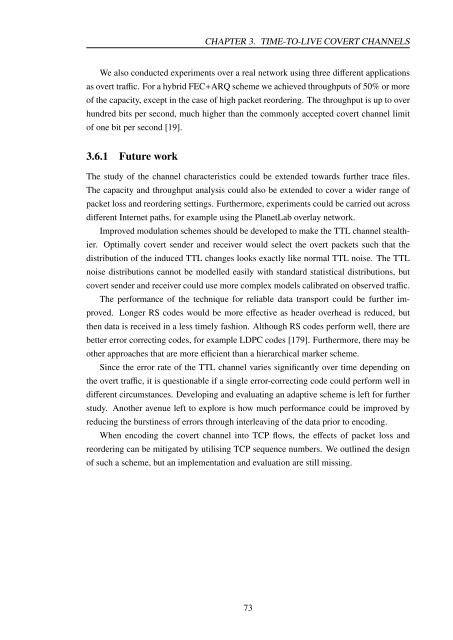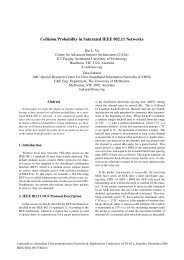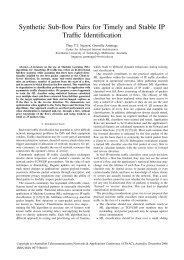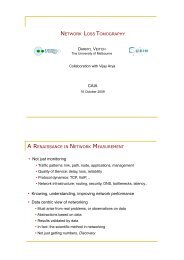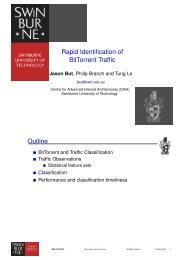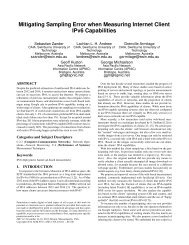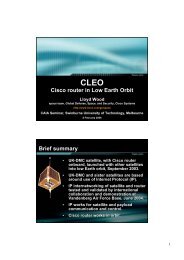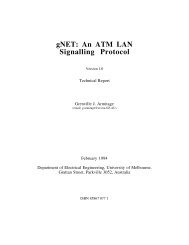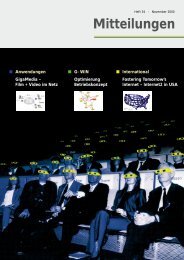Chapter 3 Time-to-live Covert Channels - CAIA
Chapter 3 Time-to-live Covert Channels - CAIA
Chapter 3 Time-to-live Covert Channels - CAIA
Create successful ePaper yourself
Turn your PDF publications into a flip-book with our unique Google optimized e-Paper software.
CHAPTER 3. TIME-TO-LIVE COVERT CHANNELS<br />
We also conducted experiments over a real network using three different applications<br />
as overt traffic. For a hybrid FEC+ARQ scheme we achieved throughputs of 50% or more<br />
of the capacity, except in the case of high packet reordering. The throughput is up <strong>to</strong> over<br />
hundred bits per second, much higher than the commonly accepted covert channel limit<br />
of one bit per second [19].<br />
3.6.1 Future work<br />
The study of the channel characteristics could be extended <strong>to</strong>wards further trace files.<br />
The capacity and throughput analysis could also be extended <strong>to</strong> cover a wider range of<br />
packet loss and reordering settings. Furthermore, experiments could be carried out across<br />
different Internet paths, for example using the PlanetLab overlay network.<br />
Improved modulation schemes should be developed <strong>to</strong> make the TTL channel stealth-<br />
ier. Optimally covert sender and receiver would select the overt packets such that the<br />
distribution of the induced TTL changes looks exactly like normal TTL noise. The TTL<br />
noise distributions cannot be modelled easily with standard statistical distributions, but<br />
covert sender and receiver could use more complex models calibrated on observed traffic.<br />
The performance of the technique for reliable data transport could be further im-<br />
proved. Longer RS codes would be more effective as header overhead is reduced, but<br />
then data is received in a less timely fashion. Although RS codes perform well, there are<br />
better error correcting codes, for example LDPC codes [179]. Furthermore, there may be<br />
other approaches that are more efficient than a hierarchical marker scheme.<br />
Since the error rate of the TTL channel varies significantly over time depending on<br />
the overt traffic, it is questionable if a single error-correcting code could perform well in<br />
different circumstances. Developing and evaluating an adaptive scheme is left for further<br />
study. Another avenue left <strong>to</strong> explore is how much performance could be improved by<br />
reducing the burstiness of errors through interleaving of the data prior <strong>to</strong> encoding.<br />
When encoding the covert channel in<strong>to</strong> TCP flows, the effects of packet loss and<br />
reordering can be mitigated by utilising TCP sequence numbers. We outlined the design<br />
of such a scheme, but an implementation and evaluation are still missing.<br />
73


